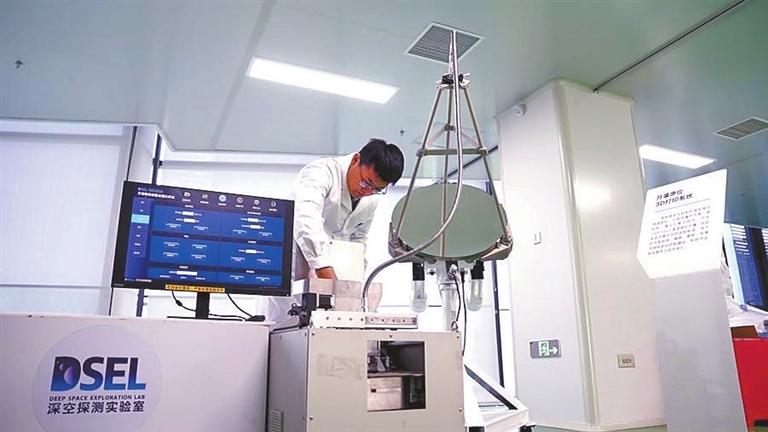
A 3D printing system developed by Chinese scientists can use lunar soil to construct habitats, paving the way for large-scale, on-site construction of lunar research stations. The Deep Space Exploration Laboratory in Hefei, Anhui Province has successfully prototyped a lunar regolith 3D printer that eliminates the need for construction materials brought from Earth, according to Yang Honglun, a senior engineer at the lab. “This printing breakthrough confirms the feasibility of using lunar soil as the sole raw building material, enabling true in-situ resource utilization and removing the need to transport any additional materials from Earth,” Yang said. The system’s flexibility allows for customized molding of complex structures. Shi Pingyan, the laboratory’s chief engineer, noted that this technology might be tested during the upcoming Chang'e 8 lunar exploration mission. Yang described how the system operates: “It uses concentrated solar energy to melt lunar soil at high temperatures. The printing head, equipped with a flexible fiber optic bundle, moves freely to create standard bricks and custom-shaped structures directly on the moon’s surface.” The team faced significant challenges in adapting the technology to the moon's extreme environment. After comparing multiple technical approaches and performing validation tests, they selected this method, which effectively addresses the complex process of capturing and transmitting solar energy for lunar soil molding. Yang said the prototype’s ability to mold lunar soil has major implications for lunar infrastructure, enabling the construction of roads, equipment platforms, and buildings. This will support more extensive and sustainable lunar exploration and resource development. The prototype also validated key technologies such as lunar energy capture and material extraction, laying the foundation for deep space resource utilization and energy systems, Yang added. The Tiandu Laboratory — named after one of the three main peaks of Anhui’s Yellow Mountain — is a national-level scientific platform established by the China National Space Administration, Anhui Provincial Government, and the University of Science and Technology of China. Since its official launch in June 2022, Tiandu has provided critical support for major projects including the Queqiao-2 relay satellite and the Chang’e-6 mission, which returned humanity’s first-ever sample from the moon’s far side. Looking ahead, the lab is developing the world’s first Mars sample research facility and is actively seeking collaboration. “We welcome scientists from both China and abroad to conduct research in Hefei,” Yang said. (Xinhua) | 
